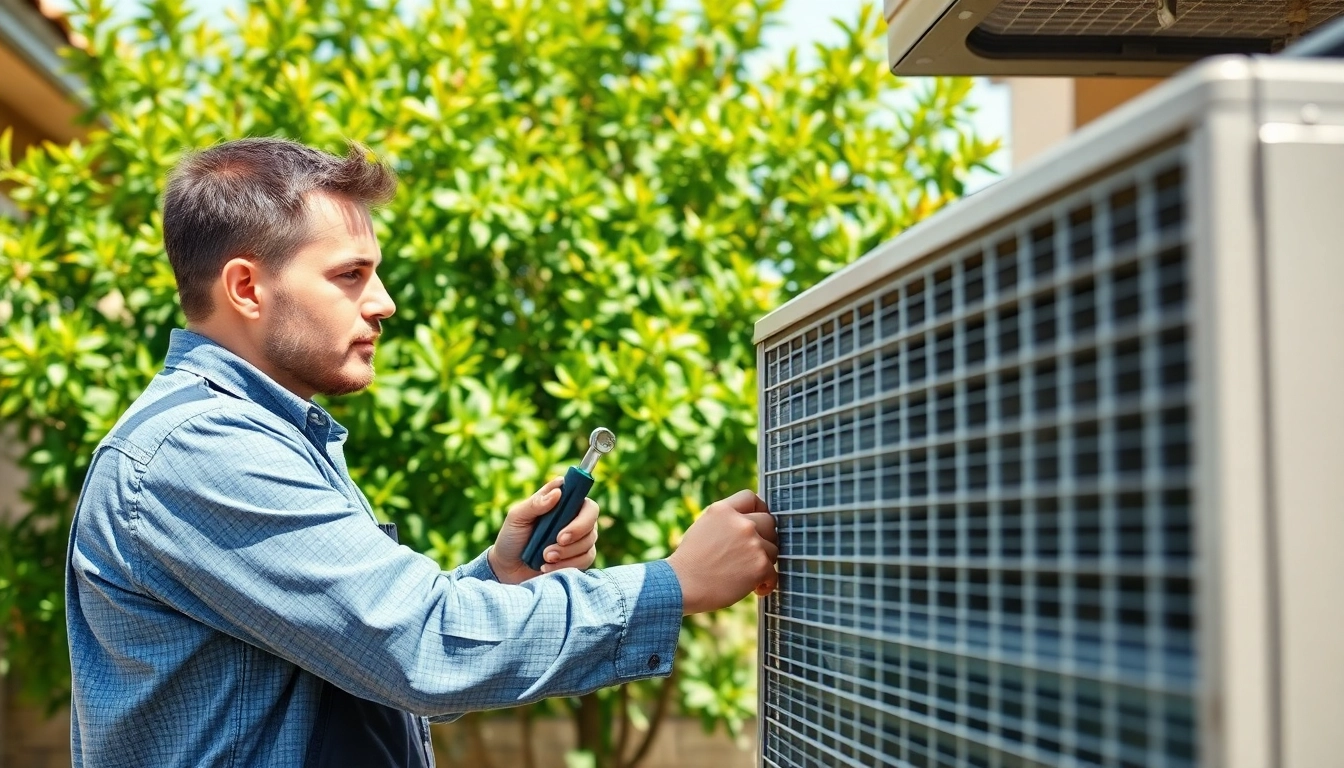
Expert Insights on Maintaining Your Scottsdale AC for Optimal Performance
Understanding Your Scottsdale AC System
Basic Components of an AC Unit
Understanding the basic components of an air conditioning (AC) unit is crucial for homeowners in Scottsdale, especially given the region’s hot climate. An AC unit typically consists of several key components:
- Compressor: The compressor acts as the heart of the system, circulating refrigerant through the coils and facilitating heat exchange.
- Condenser Coils: Located outside, these coils release absorbed heat from the refrigerant to the outside air.
- Evaporator Coils: Found indoors, these coils absorb heat from the indoor air, cooling your home in the process.
- Expansion Valve: This component regulates the flow of refrigerant into the evaporator coils, maintaining efficiency.
- Air Handler: This unit is responsible for moving the air throughout your home, ensuring consistent cooling.
Each of these components plays a vital role in ensuring your scottsdale ac functions effectively and efficiently.
Common Types of Scottsdale AC Systems
In Scottsdale, you’ll find a variety of AC systems tailored to meet the specific needs of homeowners:
- Central Air Conditioning: This type is ideal for cooling large homes, as it utilizes ducts to distribute cool air throughout multiple rooms.
- Split Air Conditioners: These systems consist of an outdoor condenser and an indoor air-handling unit, offering flexibility and ease of installation.
- Heat Pumps: Heat pumps serve dual functions—cooling in the summer and heating in the winter—making them a versatile choice for Scottsdale residents.
- Window Units: Ideal for smaller spaces, these are standalone units that can cool individual rooms efficiently.
- Ductless AC Systems: These systems allow for zoned cooling, offering energy efficiency by cooling only selected areas of your home.
How AC Systems Work
To comprehend how your AC system maintains a comfortable indoor environment, it’s essential to understand the refrigeration cycle. Here’s a simplified overview:
- The compressor compresses refrigerant gas, raising its pressure and temperature.
- The hot, high-pressure gas moves to the condenser coils, where it releases heat to the outdoor air.
- As it cools, the refrigerant turns into a liquid and flows to the expansion valve.
- The refrigerant then enters the evaporator coils, absorbing heat from the indoor space and turning back into gas.
- This cycle continues, effectively removing heat from your home and providing conditioned air.
Importance of Regular Maintenance for Scottsdale AC
Benefits of Routine Inspections
Regular maintenance of your Scottsdale AC is vital for prolonged lifespan and optimal performance:
- Extended Lifespan: Routine inspections catch minor issues before they become major problems, prolonging the life of your unit.
- Consistent Performance: Regular checks ensure all components function efficiently, maintaining a comfortable indoor climate.
- Fewer Repairs: Scheduled maintenance reduces the likelihood of unexpected breakdowns, saving on costly emergency repairs.
- Improved Air Quality: Maintenance includes cleaning filters and ducts, promoting better indoor air quality.
Identifying Potential Issues Early
One of the main advantages of scheduled maintenance is the ability to identify potential issues early:
- Unusual Noises: Noises like banging or hissing can indicate loose parts or issues within the compressor.
- Decreased Efficiency: If your AC takes longer to cool the space, it may need a tune-up or repairs.
- Frequent Cycling: An AC that turns on and off too often can be a sign of an underlying problem.
- Refrigerant Leaks: If there are pools of water around your AC, a refrigerant leak may be the culprit, which requires immediate attention.
Enhancing Energy Efficiency
A well-maintained AC unit not only cools your home effectively but also saves on energy bills:
- Optimal Refrigerant Levels: Proper refrigerant levels are essential for efficient cooling and can minimize energy consumption.
- Clean Filters: Dirty filters restrict airflow, forcing your AC to work harder and use more energy.
- Coil Condition: Clean coils maximize heat exchange and reduce energy consumption.
- Insulation Check: Proper insulation helps maintain your home’s temperature, ensuring the AC doesn’t overwork itself.
DIY Tips for Scottsdale AC Care
How to Clean and Replace Air Filters
Cleaning and replacing air filters regularly is a simple yet vital maintenance task that can significantly affect AC performance:
- Turn off your AC unit before starting.
- Remove the air filter; check if it needs cleaning or replacement. Replace disposable filters as recommended.
- If cleaning is required, use a vacuum cleaner to remove dust, and rinse under water if the manufacturer allows.
- Allow the filter to dry completely before reinserting it.
- Reinsert the filter and turn your AC back on; maintain a schedule to check filters monthly.
Checking Ductwork for Efficiency
Efficient ductwork ensures that cool air is effectively delivered throughout your home:
- Inspect your ductwork for visible signs of leaks or damage.
- Seal any gaps or holes with duct tape or mastic sealant.
- Consider scheduling a professional duct cleaning every few years to remove built-up dust and debris.
- Ensure vents are not blocked by furniture or curtains, as this can significantly hinder airflow.
Seasonal Maintenance Checklist
Implementing a seasonal checklist can simplify your AC maintenance routine:
- Spring: Clean or replace air filters, check refrigerant levels, and inspect the condenser unit.
- Summer: Monitor unit performance; clear debris and ensure unobstructed airflow.
- Fall: Schedule a professional inspection, clean leaves and debris away from outside units.
- Winter: Cover outdoor units if possible and maintain indoor temperature to prevent freezing issues.
Identifying Common Problems with Scottsdale AC
Signs Your AC Needs Repair
Recognizing signs that your AC needs repair can prevent small issues from escalating:
- Insufficient Cooling: If your AC runs but doesn’t cool effectively, it may have a refrigerant issue.
- Increased Humidity: An AC should reduce humidity; if this is rising, it could indicate a malfunction.
- Bad Odors: Foul smells can indicate mold or wiring problems, both needing immediate attention.
- High Energy Bills: Unexplained hikes in your energy bill can signal inefficiencies caused by underlying issues.
Troubleshooting Tips for Homeowners
Before calling a professional, there are some simple troubleshooting steps homeowners can follow:
- Check the thermostat settings to ensure the unit is set to cooling mode.
- Inspect the breakers to ensure the unit is receiving power.
- Verify the air filters are clean and not obstructed.
- Listen for unusual noises and inspect the outdoor unit for debris or blockage.
When to Call a Professional
Some issues require the expertise of a professional. Call for assistance if:
- You notice strange noises that you cannot identify or resolve.
- There is insufficient cooling, despite troubleshooting efforts.
- Refrigerant levels appear low, requiring a certified technician to replenish them.
- Frequent system breakdowns occur, indicating more comprehensive repairs may be necessary.
Choosing the Right HVAC Service Provider in Scottsdale
What to Look for in an HVAC Company
Selecting a reliable HVAC service provider is essential for long-term support:
- Licensing and Insurance: Ensure the company is licensed and insured to protect you from liabilities.
- Experience: Look for companies with significant experience in the Scottsdale area and familiarity with local conditions.
- Certifications: Check if the technicians hold various certifications relevant to HVAC systems.
- Transparent Pricing: Find a company that provides clear and upfront pricing to avoid hidden fees.
Understanding Service Contracts and Warranties
Comprehending service contracts and warranties can save you money and ensure you receive quality service:
- Review Contract Terms: Pay attention to included services, limitations, and expiration dates to avoid misunderstandings.
- Warranty Details: Make sure you understand what is covered under your AC system’s warranty, including parts and labor.
- Maintenance Agreements: Many companies offer agreements that include seasonal inspections, which can extend the unit’s lifespan.
Reviewing Customer Testimonials and Feedback
Feedback from previous customers can provide valuable insights:
- Online Reviews: Check platforms for customer reviews; they can reveal both the strengths and weaknesses of a company.
- Referrals: Seek referrals from friends and family who have recently used HVAC services.
- Social Media: Many companies showcase customer feedback on their social media pages, which can be an insightful resource.
